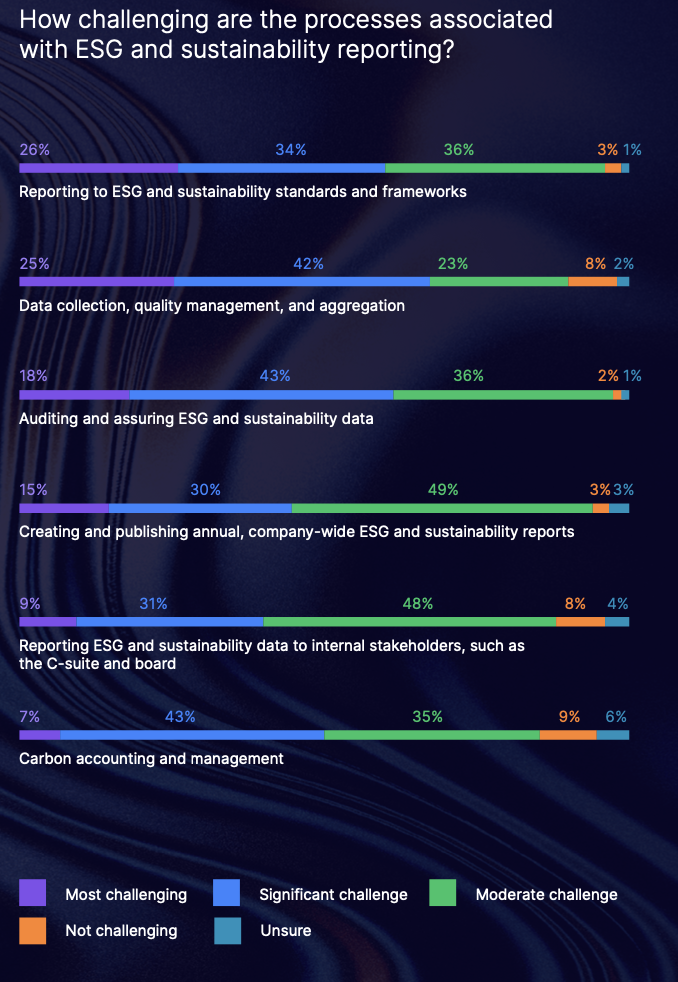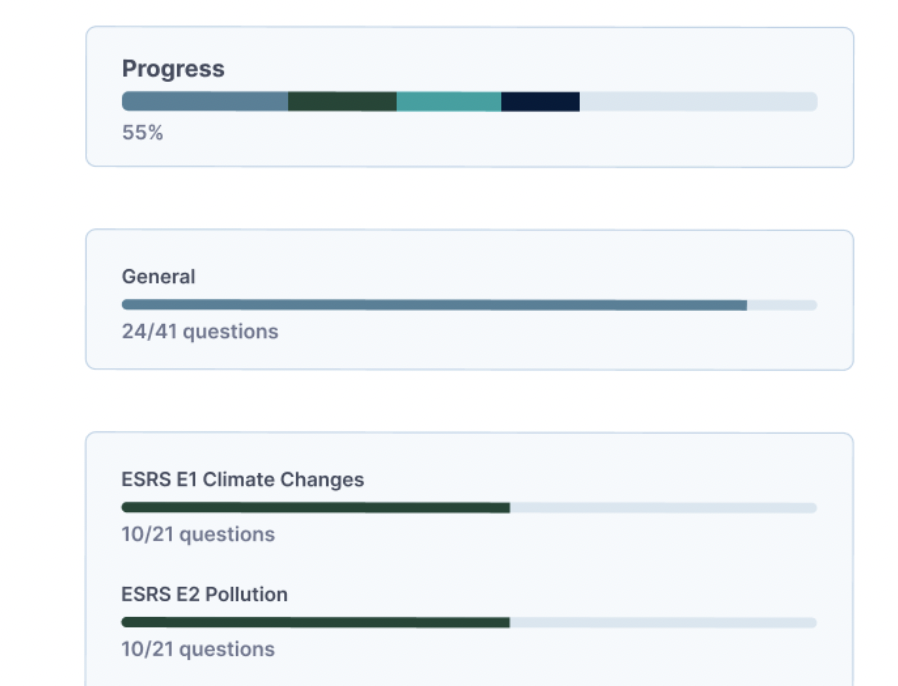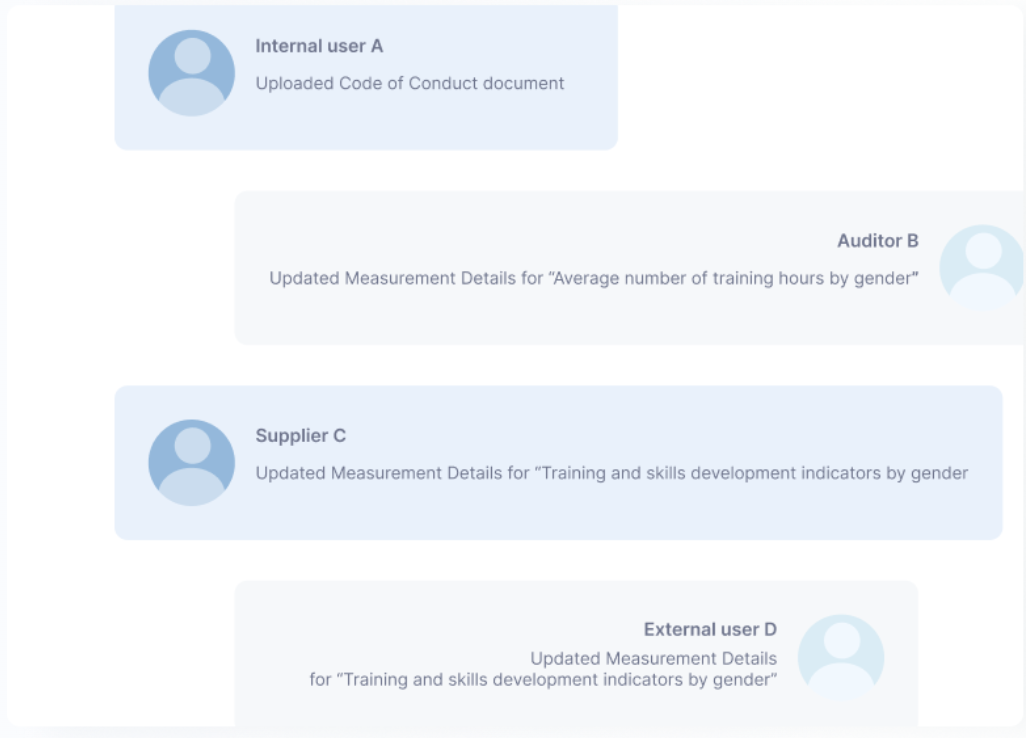Case Study
Developed a Supplier Portal for Scope 3 Compliance
ESG Flo needed to support thousands of suppliers through data visualization for better Carbon Disclosure Project (CDP) compliance management. With the lack of a supplier portal, users faced challenges in categorizing suppliers and visualizing supplier data.
ESG compliance portal that enables CDP compliance for merely Scope 1 and 2 emissions
Create a new supplier platform in tracking Scope 3 emissions.
How can we seamlessly integrate a supplier portal into our existing platform. How can we improve tracking accuracy, and data accessibility for supplier data, and enhance long-term supplier engagement?
Product Development Intern
July 2025
Figma, Figjam, Photoshop, Excel, Notion, ASANA
1. Motivation
The research process for designing the Supplier Portal was informed by a deep dive into 50+ competitors, initiated through insights from a Nasdaq article highlighting key barriers in supplier collaboration for ESG reporting.
Leveraging ESG Software
Software is crucial for ESG and sustainability as companies navigate stakeholder pressure and evolving regulations. To address this, firms invest in ESG data management tools for better communication, risk mitigation, and collaboration. Nasdaq ESG Solutions and Verdantix surveyed 150 executives across ESG, finance, and legal functions, of companies with revenues from $250M to over $1B.
🤦🏻♀️ Pain Points
Collaboration Barriers: Engaging with all relevant stakeholders (e.g., internal teams, external partners) to gather and submit the necessary data can be challenging, particularly if there is resistance or a lack of understanding about the importance of ESG reporting.
Communication Gaps: Miscommunication or lack of clear guidance from your company on what is required from suppliers can lead to incomplete or incorrect data submissions.
Manual Errors: Suppliers may struggle with accurate data entry due to manual input processes, leading to mistakes in critical information like emissions data or financial figures.
Lack of Standardization: Variations in data formats and reporting standards among suppliers can result in inconsistent data entries, making it difficult to aggregate and analyze data effectively.
Research
💆🏻♀️ Benefits
78% of respondents reported an improved ability to manage progress towards ESG targets and KPIs.
72% experienced increased accuracy in ESG and sustainability data.
65% saw improvements in ESG ratings due to software implementation.
55% reported time savings on electronic tagging and information filing.
53% found that ESG software helped streamline microsite publication for sustainability reporting.
49% noted improved cross-functional collaboration between departments.
43% cited an increased ability to audit and assure ESG-related information.
40% said ESG software improved their ability to understand and respond to various frameworks, standards, and rating organizations.
🙇🏻♀️ What does this data all mean? How can our mvp design capitalize on those facts?
These findings highlight that an MVP for ESG compliance software with Scope 3 tracking via a supplier portal must prioritize data accuracy, standardization, collaboration, and automation. To move forward with design, the platform should include smart data submission workflows to reduce manual errors, AI-driven standardization for consistent reporting, and collaborative tools to close communication gaps between suppliers and internal teams. A dashboard with KPI tracking ensures progress visibility, while automated audit trails and validation checks enhance compliance. By integrating these core features, the MVP streamlines supplier engagement, accelerates ESG reporting, and improves data-driven decision-making.
☑ Key Features to Include…
Client Actions
View Vendor Data – Allows clients to filter and access specific vendor data.
View Resources – Provides educational content on supply chain resilience and compliance.
Apply Filters – Enables customized data views based on specific criteria.
View Progress – Displays task completion and data entry progress.
View Document Table – Lists all supplier documents with key details for easy tracking.
View Notifications – Alerts clients to important updates and required actions.
2. Supplier Actions
Register Account – Suppliers create and manage their profiles.
Upload EPDs – Enables suppliers to submit Environmental Product Declarations.
Update Emission Values – Allows suppliers to modify emission data for their products.
View Notifications – Notifies suppliers of pending tasks and incomplete submissions.
3. ESG Flo Actions
Update Emission Values – ESG Flo can manually adjust or use AI tools for data accuracy.
Analyze Data – Assesses submitted supplier data and estimates missing values using benchmarks.
To seamlessly integrate the new supplier portal into our existing compliance platform, I aligned its key features
✅ Existing ESG Data Platform Features
✅ Kept the Style Consistent
⤵️ Integration of Existing ESG Data Platform Features into New Supplier Portal
💁🏻♀️ Same, Same but Different
1. Status checks for upload completion, centralizing all relevant data
Integrate with internal systems for automatic document uploads. Use AI to extract key data and enable seamless team collaboration to boost accuracy and precision.
2. Progress trackers
Get audit-ready metrics for SEC, CSRD, or any other report. Track progress with dynamic dashboards and dive deep into performance at every level, from projects to entire regions.
3. Data validation
Validate and standardize data with automatic anomaly detection and gap flagging. Ensure appropriate actions, like missing data notifications or estimations, are applied when needed.
4. Visualizations of extracted data from raw bill documents
View supplier documents for accuracy checks and transparency. Provide clear visibility into traceability and transparency, from source data to reported metrics.
5. A collaboration/notification component for relevant users
Conduct audits and assurances directly on the platform with auditor-specific permissions.
2. Exploration
In exploring the first iteration of the product during the design sprint (1-2 weeks), I created user stories, acceptance criterions, user flows, information architectures, and user flows to present and discuss with the rest of the team (engineers, project manager, researchers, and consultants)
Supplier Journey Explorations
Information Architecture
User Flows (draft)
I visualized my first design idea leveraging Figma software, as shown below. I was given a week to complete this first design sprint
3. Design Sprint
Sketch
Streamlining the supplier view, client view, and ESG Flo view for transparency, and compliance checks
Wireframe
The supplier view EPD upload page below consists of progress bars, and a place to drag and drop EPD pdfs per SKU, which can be filtered on the upper left corner














